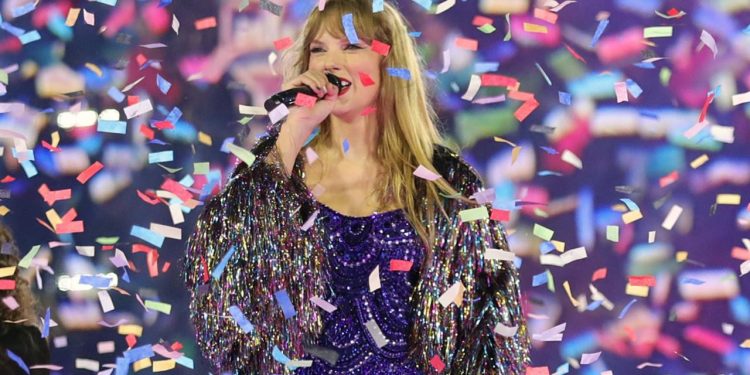Every December, millions of Spotify users experience a surge of collective anticipation, all in expectation of a feature that reveals their top 5 most-played songs and artists of the year.
I always already know my top artist will be Taylor Swift – she’s had a chokehold on my playlists since 2014. But the next four artists are genuinely a roll of the dice. They could be anyone from rock band The Killers to the Punjabi Maanu. Was I at least slightly stable this year, or was I barely holding it together? There’s only one way to find out – and that is by waiting for the annual mental health report that comes out during the first week of December – also known as Spotify Wrapped.
Weeks before its release, there are prediction threads, speculative memes, and even a cottage industry of fabricated Spotify Wrapped results for beloved fictional characters. If you’re wondering, Anthony Bridgerton is a diehard Sabrina Carpenter fan, and Carrie Bradshaw loves herself some Chappell Roan.
Wrapped isn’t just a bunch of numbers repackaged against some squiggly lined graphics. It may have started out as a holiday gift to users, but it is now a cultural event that dominates timelines and group chats. The origins of Wrapped go back to 2015 when Spotify first launched Your Year in Music. The year in review gave each user a personalised but fairly simple recap of their listening habits. So, for an app that simply collects data and lists it, why does it have such a hold on us?
Standing out and fitting in
Wrapped taps into a core human instinct: the need for self-reflection and social comparison. As research by Chang et al suggests, we’re wired to be drawn to quantitative comparisons. It’s also about validation. Being told you’re in the top one per cent of Travis Scott listeners may be a badge of honour for you, even if it quietly suggests you might need to diversify your playlists. Wrapped satisfies our craving for both individuality and belonging. We want to stand out, with our indie The Head and the Heart phase, while also fitting in, with the inevitable Gracie Abrams streams.

And then there’s the shareability. Wrapped isn’t designed to be kept private. It’s meant to be posted and discussed. Kainat, a university student in Karachi, perfectly sums it up for The Express Tribune. “People take Wrapped really seriously. They’ll start streaming consciously just so that their top artists or songs aren’t embarrassing. I think that takes away from the whole idea because it’s supposed to give an honest picture of your listening habits.”
Wrapped also preserves your memories. “It helps you relive your entire year. ‘Oh, that was my Lana Del Rey phase when I was really going through something.’ And then there was that time I was listening to Tame Impala on repeat because that’s my study music,” says Kainat. “It’s like your very own journal, but for music.”
This emotional connection is what sets Spotify Wrapped apart from other apps that offer similar year-in-review features. Sure, Duolingo will tell you how many Spanish words you learned, but it doesn’t evoke the same nostalgia as a playlist that defined your year.
A universal language
Wrapped also fosters a sense of community. Muqeet, an avid Spotify user, shares how it becomes an icebreaker. “I enjoy it because it lets me understand my friends better. When someone shares their Wrapped, everyone gets a better sense of what that person is like. There are always surprises – a hidden girly-pop lover or someone burger whose top artist is Hasan Raheem. It’s just fun to see people through their music.” He furthers on to reiterate what a 2019 Harvard study also found: “It’s a universal language, and most times people say more through the music they listen to than if they were having a conversation with you.”









